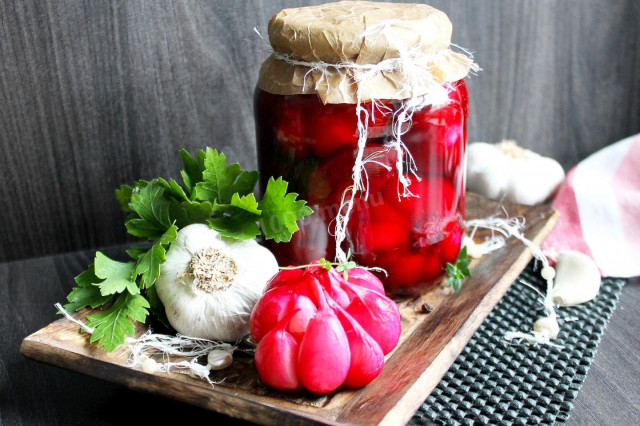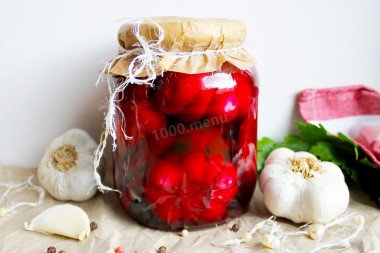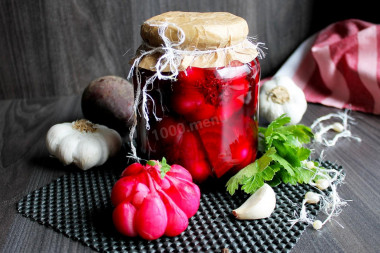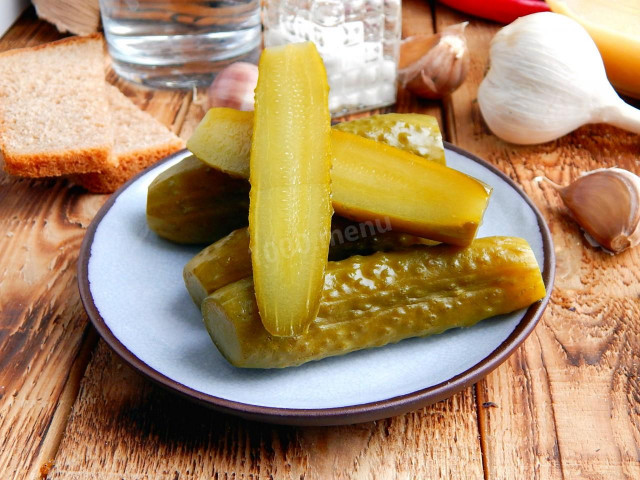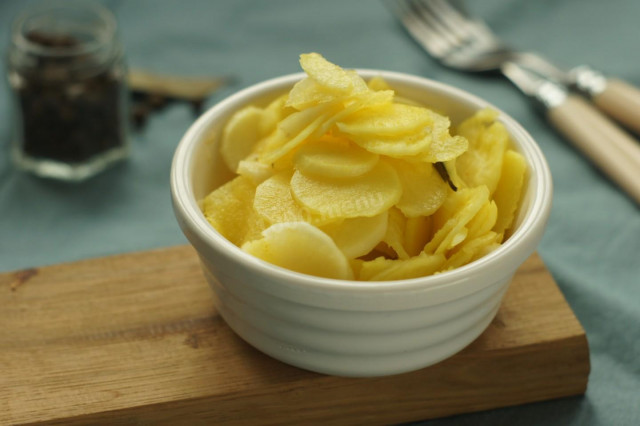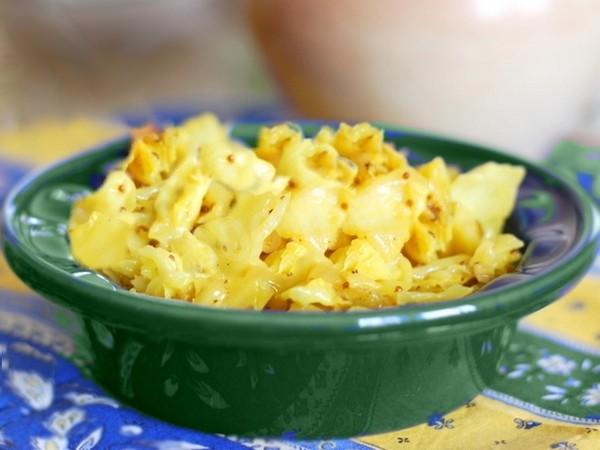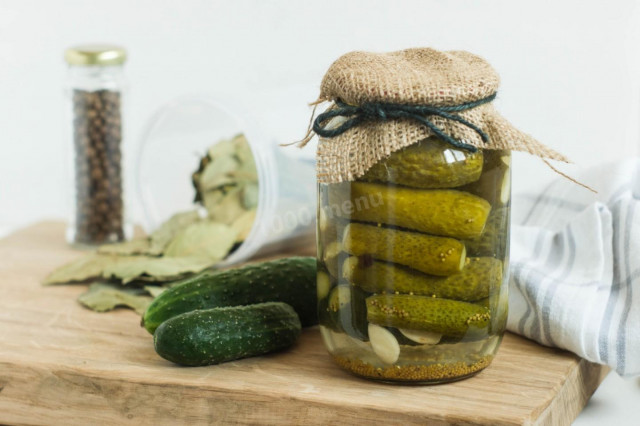Composition / ingredients
Step-by-step cooking
Step 1:
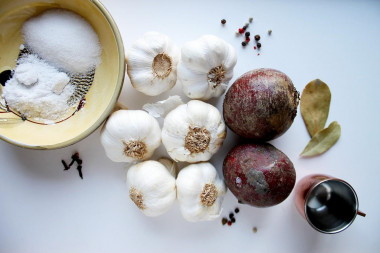
Take everything you need to cook pickled garlic with beets. Choose garlic heads of approximately the same size, it is better to take small ones so that they can be placed as neatly as possible in a jar. Use medium-sized beets.
Step 2:
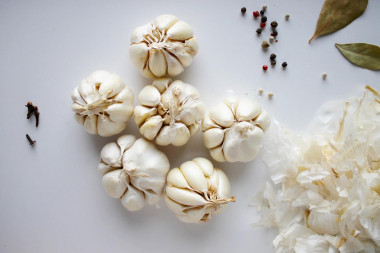
Peel each garlic head from the top layer of husk.
Step 3:

Boil water in a small saucepan. Put the garlic in boiling water and blanch for one to two minutes. Then drain the water and immediately immerse the garlic in cold water to cool.
Step 4:
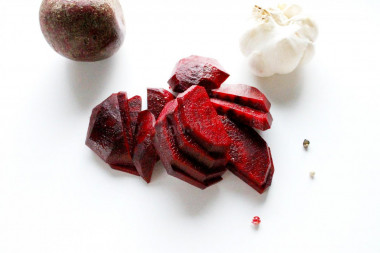
Peel the beets and cut them into rings about 0.5 centimeters thick. Since I used a small jar, I cut each beetroot circle into semicircles. So it is more convenient to tamp the vegetable into a jar.
Step 5:

Wash the jar well in advance with the product and rinse several times in clean water. The lid with which you will clog the jar, also wash and pour boiling water over it. Put a few slices of beetroot on the bottom of the container, then send the garlic heads, filling the jar to the top. In between the garlic, lay the remaining pieces of beetroot.
Step 6:

Prepare the marinade. To do this, add salt, sugar, pepper, cloves and bay leaf to the water. Send the pan to a high heat, after boiling, reduce the stove to moderate and boil the marinade for about one or two minutes. At the end, pour in the vinegar.
Step 7:

Pour the garlic and beetroot with boiling marinade.
Step 8:
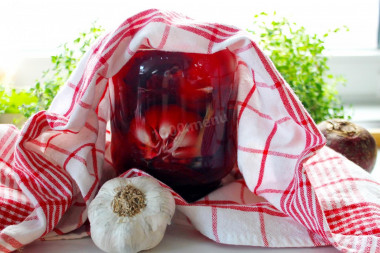
Close the jar with a lid, turn it over and wrap it with a towel. Leave at room temperature until completely cooled. Then put the jar in the refrigerator on the bottom shelf.
Step 9:
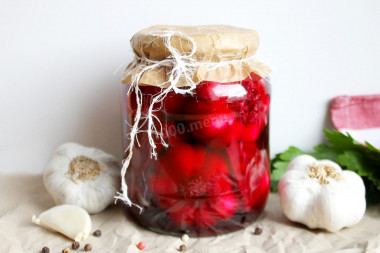
Garlic will be ready in 2-3 weeks.
Such a snack can be prepared for the winter for long-term storage.
To do this, pre-sterilize the jars and lids in a convenient way for you: in the oven, in a water bath or in the microwave. Roll up the blank with sterile lids and send it after cooling to the basement, to the balcony, to the pantry or to the refrigerator (i.e. to any sufficiently cool place).
Remember that spices such as salt, sugar, as well as vinegar and its substitutes are used in recipes for winter preparations not only for taste, but primarily as preservatives. Therefore, in no case should you reduce the concentration of salt and sugar, and also replace vinegar (essence) with a weaker concentration than indicated in the recipe, otherwise vinegar (salt / sugar) will not show their preservative properties and the workpiece will be spoiled.
We planned to eat garlic in 3 weeks, so I slightly reduced the amount of vinegar to taste.
If desired, in step number 5, you can add an umbrella of dill and hot chili pepper to the jar. From the specified number of components, I got one jar with a volume of 0.6 liters
.
Bon appetit!
Caloric content of the products possible in the dish
- Beetroot - 40 kcal/100g
- Dried beetroot - 278 kcal/100g
- Boiled beets - 49 kcal/100g
- Garlic - 143 kcal/100g
- Carnation - 323 kcal/100g
- Bay leaf - 313 kcal/100g
- Granulated sugar - 398 kcal/100g
- Sugar - 398 kcal/100g
- Wine Vinegar (3%) - 9 kcal/100g
- Vinegar 9% - 11 kcal/100g
- Balsamic vinegar - 88 kcal/100g
- Apple vinegar - 14 kcal/100g
- Vinegar - 11 kcal/100g
- Black pepper peas - 255 kcal/100g
- Salt - 0 kcal/100g
- Water - 0 kcal/100g

